

Difference among Web 1.0, Web 2.0 & Web 3.0. Unit One: Web 2.0 in Education - KNILT. Image borrowed from AppAppeal.com Website Objectives Participants will be able to identify three possible educational benefits of using Web 2.0 in the classroom.
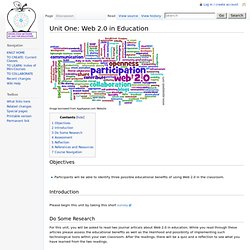
Introduction Please begin this unit by taking this short survey. Web 1.0, Web 2.0, Web 3.0 and Counting. Well, I’m not sure if you are aware of the differences between what is allegedly called by technology marketers Web 1.0, Web 2.0 and Web 3.0.
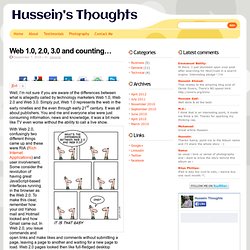
Simply put, Web 1.0 represents the web in the early nineties and the even through early 21st century. It was all about publishers. You and me and everyone else were just consuming information, news and knowledge, it was a bit more like TV even worse without the ability to call a live show. Dictionnaire du Web 2.0: crowdsourcing et wiki.
Le crowdsourcing consiste, pour les éditeurs de sites, à utiliser les internautes pour créer des contenus, répondre aux questions d'autres visiteurs, voire participer à la conception du site.

Ce terme, que l'on peut traduire par "approvisionnement par la foule" représente une sorte d'externalisation ("outsourcing"). En mutualisant les ressources et compétences de leurs visiteurs, les sites peuvent alors proposer des produits et services à des coûts très bas. De nombreuses places de marché proposent ainsi aux internautes d'héberger leurs créations – photos, vidéo, essais, articles – puis de les revendre à bas prix, moyennant une commission. « En qui peut-on avoir confiance ? » Dominique Schnapper. Débats Ce texte est extrait de "la leçon inaugurale" que prononcera Dominique Schnapper, lundi 19 juillet, à Montpellier, lors de l'ouverture des Rencontres de Pétrarque, organisées par France Culture et Le Monde dans le cadre du Festival de Radio France.
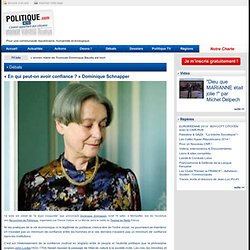
Ni les pratiques de la vie économique ni la légitimité du politique, c'est-à-dire de l'ordre social, ne pourraient se maintenir s'il n'existait pas un minimum de confiance entre les hommes et si ces derniers n'avaient pas un minimum de confiance dans les institutions. C'est sur l'établissement de la confiance (outrust en anglais) entre le peuple et l'autorité politique que le philosophe anglais John Locke(1632-1704) faisait reposer le passage de l'état de nature à la société civile. Les rois, les ministres et les assemblées élues n'étaient, pour lui comme pour nous, que les dépositaires de la confiance provisoire que leur avait accordée le peuple. Sensemaking. In information science the term is most often written as "sense-making.

" In both cases, the concept has been used to bring together insights drawn from philosophy, sociology, and cognitive science (especially social psychology). Sensemaking research is therefore often presented as an interdisciplinary research programme. Sensemaking and information systems[edit] Dervin (1983, 1992, 1996) has investigated individual sensemaking, developing theories underlying the "cognitive gap" that individuals experience when attempting to make sense of observed data. Because much of this applied psychological research is grounded within the context of systems engineering and human factors, there exists a strong desire for concepts and performance to be measurable and for theories to be testable.
After the seminal paper on sensemaking in the Human-Computer interaction field in 1993,[1] there was a great deal of activity around the understanding of how to design interactive systems for sensemaking. Mapping GitHub – a network of collaborative coders. GitHub is a large community where coders can collaborate on software development projects.
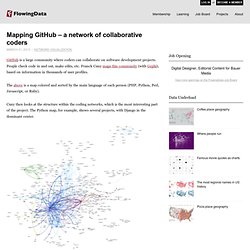
People check code in and out, make edits, etc. Franck Cuny maps this community (with Gephi), based on information in thousands of user profiles. The above is a map colored and sorted by the main language of each person (PHP, Python, Perl, Javascript, or Ruby). Cuny then looks at the structure within the coding networks, which is the most interesting part of the project.
The Python map, for example, shows several projects, with Django in the dominant center. In contrast, the PHP map is a lot more segregated. I do wish there were some labels for the clusters so that I knew what exactly I was looking at, but if you like, you can download the the files (bottom of post) and explore them in Gephi yourself. In praise of cooperation without coordination: Clay Shirky at TEDGlobal 2012. Amy Cuddy must be proud: Clay Shirky walks on stage and promptly strikes a power pose.
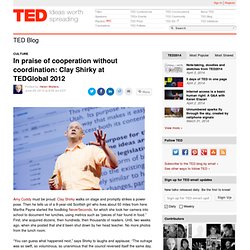
Then he tells us of a 9-year-old Scottish girl who lives about 50 miles from here. Clay Shirky: How social media can make history. Clay Shirky: How cognitive surplus will change the world. Clay Shirky: Why SOPA is a bad idea. Continuous Partial Attention. What is continuous partial attention?
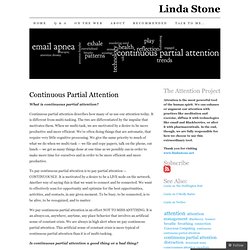
Teachers Training International – Helping you motivate, manage and engage your students. One of the downsides of teaching is that in the process of educating our students about facts and figures we are also teaching our students how to think. For most teachers their initial response would be to not give this a second thought. However I wonder if this might be one of the greatest long term problems that education is facing right now. Watch the following two and a half minute talk clip and then I will explain my thoughts (the key thought happens at 2:26) Did you catch the key sentence?
Search. Clay Shirky: Institutions vs. collaboration. Howard Rheingold: The new power of collaboration. Charles Leadbeater: The era of open innovation. Deborah Gordon: the emergent genius of ant colonies. Video2.ted.com/talk/podcast/2010X/None/RachelBotsman_2010X-low-fr.mp4. Richard Baraniuk on open-source learning. Www.yalelawjournal.org/pdf/114-2/Benkler_114-2.pdf.
Rachel Botsman: The case for collaborative consumption. I Know Who You Are and I Saw What You Did - Social Networks and the Death of Privacy - By Lori Andrews - Book Review.